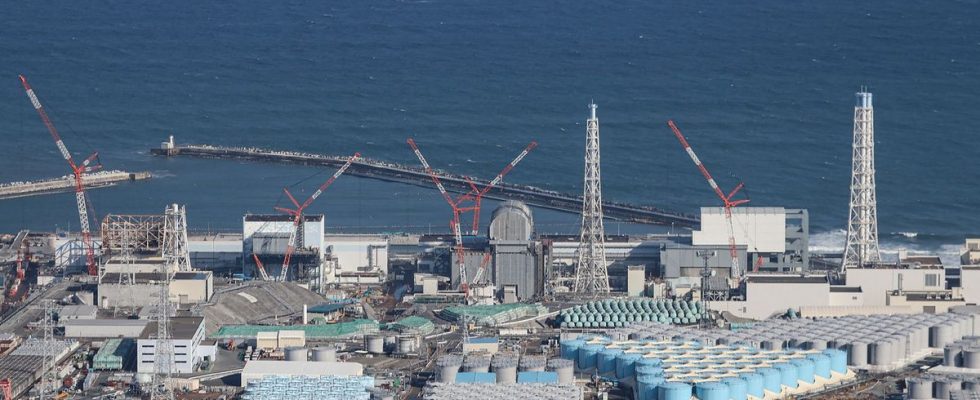It is a plan that greatly worries the Japanese as well as the neighboring countries of the Japanese archipelago. The Japanese government will set this Tuesday the date for the start of the discharge into the sea of treated water from the damaged Fukushima nuclear power plant. An official from Tepco, the operator of the Fukushima plant, said on Monday that the discharge could start “one or two days” after the government’s decision. Validated in July by the International Atomic Energy Agency (IAEA), the project however meets strong opposition. 20 minutes make the point.
What is the plan ?
The operation should last for decades. Tokyo intends to dump into the Pacific Ocean, after treatment, more than 1.3 million tonnes of water stored on the saturation site of the Fukushima Daiichi power plant, devastated by the tsunami of March 11, 2011 in the northeast. from Japan.
Coming from rain, groundwater or the injections needed to cool the cores of nuclear reactors that went into meltdown in 2011, this water has been filtered but the tritium, a radionuclide which is only dangerous for humans at very high concentrated doses, could not be eliminated.
How many liters per day?
Tepco plans a discharge into the ocean of 500,000 liters per day maximum, and with a dilution to reduce the level of radioactivity of the tritiated water. The IAEA estimated in July that the release would have only a “negligible” impact on people and the environment.
Nuclear power plants around the world have been releasing tritium into the water for decades, without any identified environmental or health impact, Tony Hooker, a radiation specialist from the Institute, told AFP. University of Adelaide (Australia).
Opposition from fishermen and NGOs
Environmental organizations have criticized the Japanese plan, however, with Greenpeace accusing the Japanese government of “minimizing the risk of radiation”. The Japanese government is also encountering opposition from fishermen. “We are always opposed to the discharge of water,” said Masanobu Sakamoto, the representative of the Japanese fishing industry, after meeting the Prime Minister, assuring him that the fishermen would maintain this position.
“I told him that scientific security does not necessarily equate to a feeling of security in society. There is fear of damage to the reputation of the products” once the rejection begins, he added.
Concern from neighbors
And for good reason. China – to which a quarter of Japanese seafood exports were destined in 2022 – already decided in July to ban imports of foodstuffs from ten Japanese departments, including that of Fukushima, and introduced radiation on foodstuffs from the rest of Japan.
The South Korean population is also worried. In July, demonstrators took to central Seoul to protest the IAEA’s “insufficient” review as Rafael Grossi met with Foreign Minister Park Jin. They held up placards criticizing the IAEA and accusing it of having written its report “under the influence of Japan”.
Pyongyang also denounces for its part “the unreasonable behavior of the IAEA which actively supports and facilitates Japan’s projected discharge of nuclear-polluted water, which is unimaginable”, in a press release from the Ministry of Protection of the environment. This discharge of water will have “a fatal negative impact on human lives, security and the ecological environment”, worries the North Korean regime.

